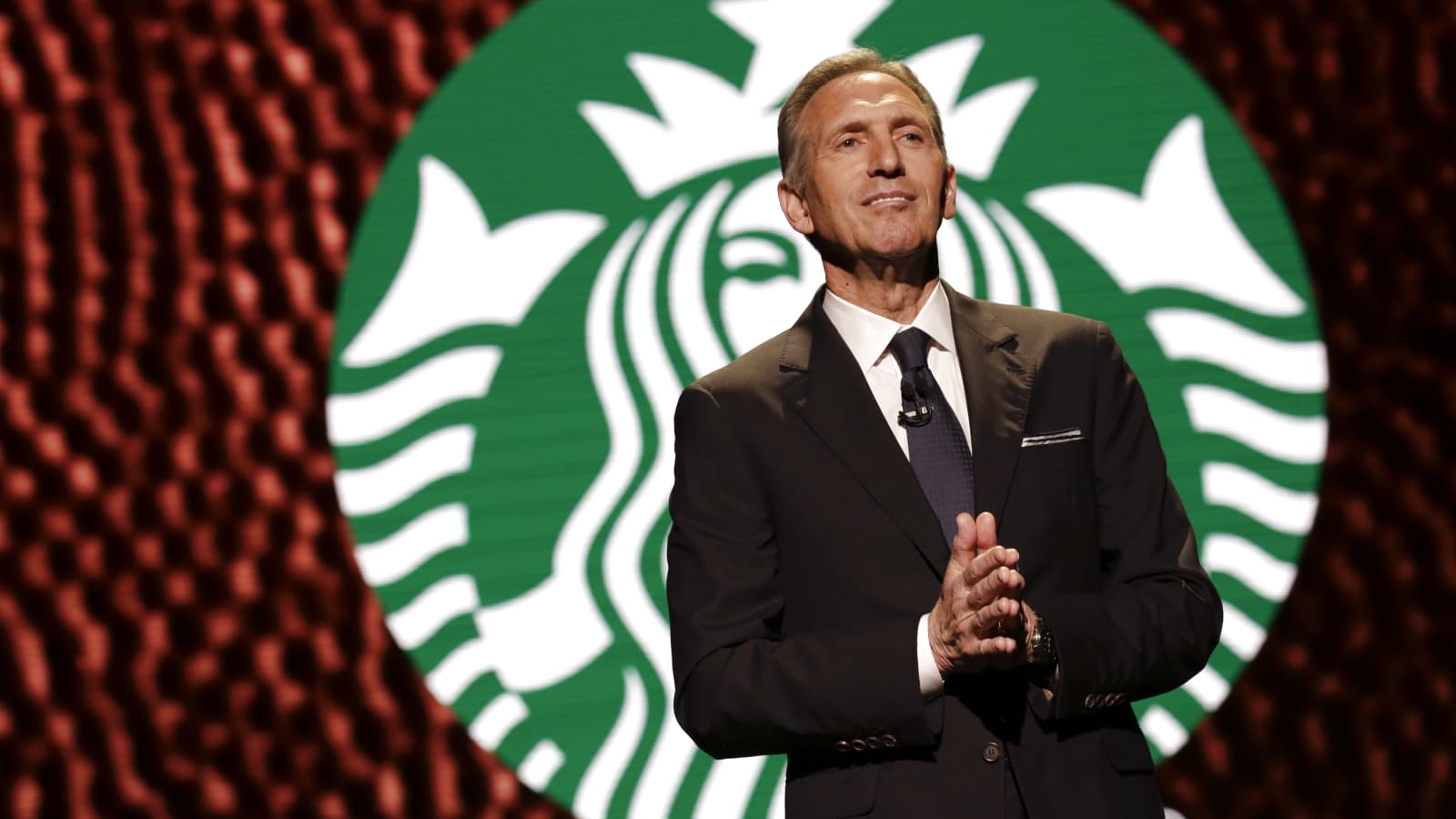How Howard Schultz’s Famous Vision Transformed the Coffee World
Discover how Howard Schultz’s visionary approach transformed Starbucks from a simple coffee shop into a global icon. Learn actionable strategies on customer experience, employee culture, purposeful innovation, and brand storytelling to inspire your own business journey.

Howard Schultz didn’t just build a coffee company; he built a place where people feel at home. His vision for Starbucks redefined how we see coffee, turning it from a simple beverage into an experience that’s as much about connection and comfort as caffeine. Schultz’s journey is a masterclass in creating a meaningful customer experience, building a positive company culture, and staying adaptable—all factors that helped Starbucks grow into a global powerhouse.
Let’s dive into Schultz’s strategies and see what lessons we can apply to elevate our businesses.

1. Creating a Customer-Centric Experience
Howard Schultz’s vision for Starbucks was not just about selling coffee but creating a “third place” between home and work. Inspired by the warm coffee culture he observed in Italy, Schultz saw an opportunity to bring that same sense of community to Starbucks. Under his leadership, Starbucks stores became places where people could gather, relax, and connect over coffee.
Key Strategy: Schultz focused on transforming the customer experience by emphasizing store ambiance, personalized service, and a high-quality product. Each Starbucks location is designed to provide warmth and comfort, making Starbucks feel like a home away from home.
Takeaway for Your Business: Consider the experience you create for your customers. It doesn’t have to be complex—small touches that make people feel comfortable and valued can make your business a place they look forward to visiting.

2. Investing in Employees to Build a Strong Culture
Schultz believed that happy employees lead to happy customers. To build a motivated workforce, he introduced benefits like healthcare, stock options, and competitive wages—even for part-time workers. This investment was nearly unheard of in the retail industry then and helped create a loyal, motivated team that took pride in their work.
Key Strategy: Schultz’s decision to invest in his team’s well-being cultivated a culture of respect, loyalty, and pride among employees, which, in turn, translated to better service and a stronger brand.
Takeaway for Your Business: Invest in your team. By valuing your employees and offering meaningful benefits, you create a loyal, motivated workforce that genuinely cares about delivering a great customer experience. A positive company culture radiates outward and can become one of your most vital assets.

3. Going Global While Staying Local
Under Schultz’s leadership, Starbucks experienced rapid global expansion. But instead of simply transplanting the U.S. model everywhere, Schultz and his team took time to adapt Starbucks to local tastes and customs. In Japan, for example, Starbucks offered more privacy, while in China, stores incorporated more seating to support a culture of social gatherings. This careful adaptation helped Starbucks succeed worldwide while staying relevant to each local market.
Key Strategy: Schultz expanded Starbucks by respecting and adapting to each new market’s culture. By balancing consistency with local relevancy, Starbucks grew without diluting its brand.
Takeaway for Your Business: Stay open to your customers’ unique needs and preferences as you grow. Minor adjustments to suit local markets or customer segments can make your brand feel more authentic and connected to each community.

4. Innovating with Purpose
Schultz understood that resting on past success wouldn’t keep Starbucks relevant. Instead, he encouraged continuous innovation with a purpose—whether through new products, digital advancements, or social impact initiatives. Under his direction, Starbucks introduced mobile ordering, loyalty programs, and new product lines, such as healthier food options and alternative milk choices. Schultz’s vision always aligned with providing added value to customers and staying responsive to their evolving needs.
Key Strategy: Schultz combined innovation with purpose by introducing new products and features aligned with Starbucks’ brand values, like inclusivity and sustainability. This kept the brand fresh and helped Starbucks resonate with socially conscious consumers.
Takeaway for Your Business: Focus on innovating with intention. Rather than pursuing trends for the sake of it, introduce changes that reflect your brand’s values and enhance the customer experience. This purposeful innovation keeps customers engaged and reinforces your brand’s relevance.

5. Building a Brand That Tells a Story
Starbucks isn’t just about coffee—it’s about the story behind it. Schultz knew the power of storytelling in building a brand that resonates emotionally with customers. From the moment customers walk into a Starbucks, they’re immersed in a brand narrative that speaks to community, quality, and social responsibility. Starbucks cups, logos, and packaging are designed to be instantly recognizable, reinforcing the company’s image at every touchpoint.
Key Strategy: Schultz built Starbucks into a brand with a story. The consistent messaging across Starbucks’ branding elements—from store design to social media—connects customers to a broader purpose, encouraging them to see themselves as part of the Starbucks story.
Takeaway for Your Business: Develop a narrative for your brand that speaks to its core values. Every customer interaction is an opportunity to communicate what your business stands for. A powerful brand story helps build loyalty and emotional connection with customers, turning them into advocates for your business.

Conclusion: Lessons from Howard Schultz’s Vision
Howard Schultz’s approach to Starbucks shows how a powerful vision centered around customer experience and company culture can redefine an entire industry. By focusing on experiences over products, valuing employees, adapting to local cultures, innovating purposefully, and creating a story that resonates, Schultz transformed Starbucks from a single coffee shop into a global icon.
Ready to Build Your Own Success Story?
Take inspiration from Schultz’s journey. Think about the experience you’re creating, invest in your team, and always stay true to your values. Whether building a new business or growing an existing one, these principles can help you create a brand people love to return to. Start by picking one area to focus on—customer experience, employee culture, or brand storytelling—and see where it takes you.
Thoughtful Journal Prompts for CEOs and Founders
As you reflect on Howard Schultz’s journey and your own, consider these journal prompts to deepen your leadership insights and guide your next steps:
- Customer Experience: What specific elements of my business make customers feel welcome and valued? How can I enhance these experiences to foster deeper connections?
- Employee Empowerment: How am I showing appreciation and support to my team? What more could I do to create a work environment where employees feel motivated and respected?
- Global Mindset: If I were to expand into a new market, what aspects of my brand’s core values would remain unchanged? What adaptations would I need to make to fit the culture and preferences of a different audience?
- Purpose-Driven Innovation: What recent changes have I made to my product or service? How do these changes align with my brand’s values and contribute meaningfully to customers’ lives?
- Brand Storytelling: What story does my brand currently tell? If my customers could describe my brand in one sentence, what would I want them to say?
- Personal Leadership Growth: What qualities in Schultz’s leadership resonate with me? How can I integrate these qualities into my approach to leadership?
Set aside a few minutes each week to explore these questions. This will help you stay connected to your vision and inspired by your journey. Each answer could reveal insights that keep you moving forward with purpose.

